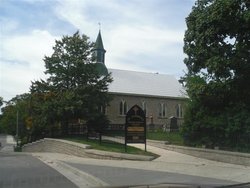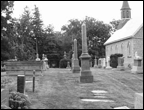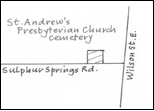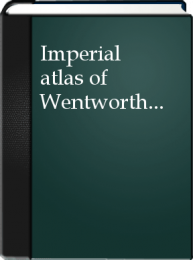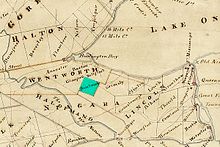Hamilton_St Andrew’s Presbyterian Church Cemetery – Revised to 2009
$5.00
Digital Download Only
Description
CEM 124-Rev_st_andrews_presbyterian_church_cemetery
Street Address: 31 Sulphur Springs Road Location: Lot 45, Concession 2, Ancaster Type of Cemetery: Religious (Presbyterian)
Responsible Agency: St. Andrew’s Presbyterian Cemetery Board
Status for Burials: Open for burials Plot Plan: None Size:
Medium, 300 monuments
Fencing: Chain link, iron railings and wire with open section Monument Types: Flat, upright, column and altar Monuments of: Marble, granite and wood
To reach Saint Andrew Cemetery, turn west off of Wilson Street, which is the main street through the village of Ancaster, onto Sulphur Springs Road. The church and cemetery are directly on your right hand side after you make the turn.
Date of Opening: 1832
History:
In the early 1820s the Presbyterian congregation of Ancaster joined with the Anglican community to build a church that became St. John’s Anglican Church. Wishing to have their own place of worship, the Presbyterians sold their half of the St. John’s property in 1826 and bought a site on Sulphur Springs Road on which to build a church.
The congregation’s new church was built in 1832, the same year that the first Presbyterian Minister of the area, Reverend George Sheed, died. Sheed was the first interment in the adjacent cemetery, which is still in use under the management of the church’s own cemetery board.
The churchyard contains many interesting monuments, including some altar or table top style tombs, more commonly seen in the British Isles. In 1947, Andrew Hyslop donated an additional parcel of land which greatly enlarged the cemetery property.
Saint Andrew Cemetery had it’s first burial in November 1832, before the first church had even been finished, founding minister, Rev. George Sheed. It is still an active cemetery today. It is owned and maintained by Saint Andrew Presbyterian Church.
St. Andrew’s Presbyterian Church, Ancaster, Ontario traces its origins to 1826, when The Rev. George Sheed was sent as missionary to the area by the Established Church of Scotland. Rev. Sheed established the Presbyterian Congregation of West Flamboro and Ancaster, located in Ancaster, and later named St. Andrew’s. He served as minister until his death ca. 1832. The congregation was then served by the Rev. Mark Young Stark from 1834 until the Disruption in 1844. At that time, some members of the congregation followed Rev. Stark and left St. Andrew’s, forming a new “Free Church” congregation in Ancaster (Stark also formed Knox Church in Dundas at the same time). Following this, services at St. Andrew’s, Ancaster were led by The Rev. Andrew Bell (until c.1847), and by The Rev. Kenneth McLennan (until c. 1857). With the departure of McLennan, the congregation was left without a regular minister. From 1858 until 1875, however, services of worship were conducted by The Rev. Robert Burnet, of St. Andrew’s Church, Hamilton. The “Free Church” congregation was served by The Rev. Stark until 1854, when the two “Free Church” congregations in Dundas and Ancaster were divided. In addition to St. Andrew’s Church and the “Free Church” congregation, a third Presbyterian church was established in Ancaster ca. 1854, when a United Presbyterian congregation was formed. In 1861, however, this congregation united with the “Free Church” congregation. Then, in 1875, the various branches of Presbyterian groups in Canada united to form “The Presbyterian Church in Canada”. With this union the two congregations in Ancaster were also united, under the name St. Andrew’s Presbyterian Church. St. Andrew’s voted to remain within The Presbyterian Church in Canada at the time of Church Union in 1925.
